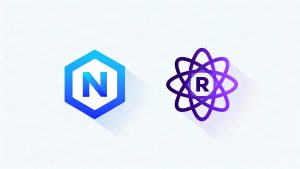Teams that store Kubernetes manifests in Git still debate the controller that should keep clusters in line with those manifests. Argo CD and Flux lead that debate, and both already run critical workloads. Because the two projects solve the same problem through different design bets, engineers often disagree on which one belongs in a new platform. This article follows a consulting approach: it frames each choice, maps strengths to real situations, and shows how trade-offs shift once you scale, secure, or audit your clusters. After reading, you should settle the fluxcd vs argocd argument with clear criteria.
What is Argo CD?
Argo CD deploys as a service inside Kubernetes. It reads a Git repository, renders resources with Helm or Kustomize, then applies them in waves so dependencies come up in order. Each application lives as a custom resource. The controller watches that resource and updates the cluster until declared and actual states match.
A web console displays every app, its sync status, and its health checks. Developers open that console to trigger rollout or rollback without touching kubectl, which means platform teams can delegate changes while keeping audit trails. Argo CD also offers ApplicationSets. These templates clone an application definition across many clusters, which reduces copy-paste and lets a single commit fan out to every environment. The cost is that Argo CD keeps its own RBAC tree, so t500_prod_administrators manage Kubernetes RBAC plus a second policy file.
What is Flux?
Flux uses a set of small controllers that act independently: one pulls Git, one applies Kustomize overlays, another manages Helm releases, and so on. Every controller writes normal Kubernetes events, so Prometheus and Grafana can track drift or failure the same way they track other operators. There is no built-in dashboard; instead, status surfaces through the CLI and metrics.
Flux handles container image updates through its image-automation controller. When it finds a new tag that passes your policy, the controller opens a pull request against the Git repository. Review happens in the normal code flow, and once the merge lands, the standard reconciliation loop rolls the change. This pattern satisfies audit rules that demand an immutable link between running code and a commit hash.
Head-to-Head Comparison
Engineers often start a flux vs argocd review with the user interface. Argo CD offers a GUI, while Flux expects operators to rely on logs and dashboards. That visual layer shapes daily life: with Argo CD, a junior developer can find a failing deployment in seconds; with Flux, the same developer must use kubectl logs or Grafana panels.
Helm support marks a technical divide. Flux treats Helm as a first-class package manager: hooks, tests, and rollbacks work exactly as they do in the Helm CLI. Argo CD goes through a render step. It converts charts to YAML, shows a diff, and then applies the result. That preview helps spot drift early, yet it means hooks that expect Helm to manage ordering sometimes misfire.
Multi-cluster control follows the same pattern. Argo CD’s central dashboard shows every cluster, every namespace, and every sync, which simplifies fleet oversight. Flux installs one instance per cluster. This local approach keeps secret sprawl down and narrows blast radius, but it removes the single pane of glass.
Performance shifts with scale. Flux runs lean because each controller tracks only its objects and skips a full application cache. Argo CD maintains a graph of every app in memory; when hundreds of apps exist, its search bar can lag although tuning reconciliation intervals mostly solves that issue.
Security teams note that Flux impersonates a scoped service account for every action, so permission boundaries map to namespaces without extra policy. Argo CD must manage a separate role list inside its configuration, which adds one more file to audits.
When to Choose Argo CD
Pick Argo CD if visibility, onboarding speed, or policy windows dominate your requirements. The GUI lets developers trace a bad rollout, inspect a diff, and self-service a rollback. That short feedback loop lowers incident time even when operators are not on call.
ApplicationSets help when you run the same stack in many regions. A single template can deploy to dev, staging, and ten production clusters, while sync windows let security teams block overnight pushes in sensitive environments.
Large organizations with strict change-management rules often like Argo CD’s built-in notification engine and SSO integration. These features exist in Flux through extra controllers, but Argo CD ships them in the main manifest, which shortens project timelines.
When to Choose Flux
Flux makes sense when clusters must stay minimal, when Helm fidelity matters, or when networks isolate clusters from the public internet. Because each controller is a static binary and no central UI exists, memory footprints stay tiny. Edge clusters or cost-constrained staging rings therefore gain headroom for workloads.
If your team already uses Helm hooks for database migrations, tests, or smoke checks, Flux will honor those hooks exactly. Argo CD can replicate the flow with extra annotation, but Flux follows Helm’s native plan out of the box.
Air-gapped sites and compliance programs also benefit. Flux bootstraps from a local Git mirror and reconciles without a public endpoint. Its service-account impersonation model fits least-privilege policies, and every change results in a signed commit that auditors can trace.
Can You Use Both Together?
Some enterprises sidestep the argocd vs fluxcd debate by combining the two. They run Flux inside each cluster for infrastructure components, and they place one central Argo CD instance on the platform hub for application releases. This division lets platform engineers keep their GitOps logic simple while still giving developers a dashboard.
Clear boundaries are critical. The teams split repositories so that Argo CD never touches the directories managed by Flux, which prevents conflicting writes and keeps logs readable. With that guardrail in place the hybrid model runs smoothly.
Conclusion
No single verdict settles argocd vs flux because the winning tool depends on the constraints you face. Choose Argo CD when a visual workflow, multi-cluster templates, or bundled policy gates shorten delivery. Choose Flux when low resource use, pure Helm support, or strict network isolation guide architectural choices. In rare cases, combine both: let Flux govern infrastructure and let Argo CD drive application teams. Map these criteria to your roadmap; the right answer for argo cd vs flux will surface.



